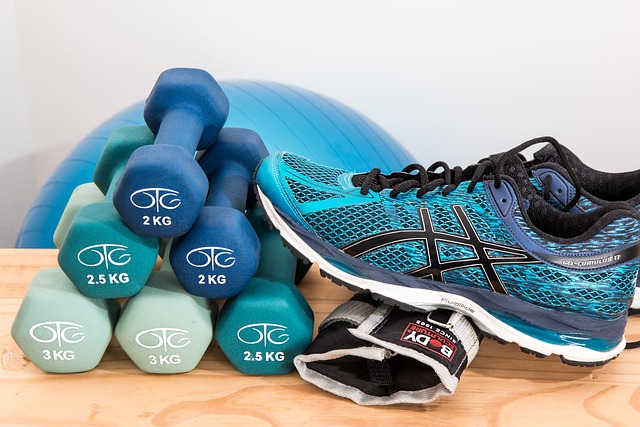Creative therapies like art and music offer a unique emotional well-being approach distinct from cognitive-behavioral therapy (CBT), focusing on expression rather than changing negative thought patterns. Engaging in artistic activities taps into the subconscious, providing insights and understanding of feelings. These creative expressions facilitate emotional processing, perspective, and challenging negative thoughts—key CBT components. Backed by research, art and music activate brain regions related to emotion regulation and memory formation, promoting structural and functional changes over time. Incorporating these therapies enhances personal growth, complements CBT, offers stress relief, improves mood, and fosters emotional intelligence through creative processes.
Unleash your emotions through creative expression! This article explores the therapeutic power of art and music as alternative treatments for emotional release. Discover how these creative therapies complement traditional methods like cognitive-behavioral therapy (CBT), offering unique paths to healing and personal growth. We’ll delve into the science behind artistic self-expression, its impact on mental well-being, and practical ways to integrate creative therapies into your daily routine.
- Understanding Creative Therapies: A Non-Traditional Approach to Emotional Well-being
- Art and Music as Powerful Tools for Cognitive-Behavioral Therapy
- The Science Behind Creative Expression and Emotional Release
- Incorporating Creative Therapies into Everyday Life for Personal Growth
Understanding Creative Therapies: A Non-Traditional Approach to Emotional Well-being

Creative therapies, including art and music, offer a unique and non-traditional approach to emotional well-being. Unlike cognitive-behavioral therapy (CBT) which focuses on identifying and changing negative thought patterns, creative arts provide an avenue for expression and release that bypasses rational thinking. Engaging in artistic activities allows individuals to tap into their subconscious minds, where emotions and memories often reside. This process can lead to profound insights and a better understanding of one’s feelings.
Unlike conventional talk therapies, creative therapies encourage self-expression through tangible means such as paintbrushes, musical instruments, or sculpting tools. The act of creating becomes a form of communication, enabling individuals to convey complex emotions that might be difficult to articulate verbally. This experiential approach can be particularly beneficial for those who find traditional therapy methods challenging or less engaging, offering an alternative path towards emotional release and healing.
Art and Music as Powerful Tools for Cognitive-Behavioral Therapy

Art and music have long been recognized as therapeutic tools, but their power in conjunction with cognitive-behavioral therapy (CBT) is only now being fully explored. These creative expressions offer unique ways for individuals to process emotions, gain perspective, and challenge negative thought patterns—all key components of CBT. Through art, people can externalize their feelings, making them more tangible and easier to understand. Creating a visual representation of complex emotions can help clients identify triggers and develop healthier coping mechanisms. Similarly, music provides a means of non-verbal communication that bypasses the cognitive barriers often associated with language. It can evoke powerful memories and emotions, enabling individuals to confront and release repressed feelings.
In CBT sessions incorporating art and music, therapists facilitate a safe space for clients to explore their inner experiences. Art therapy encourages self-discovery through creative processes, allowing individuals to express themselves without the need for conventional communication. Music therapy, on the other hand, can help regulate mood, reduce anxiety, and enhance overall well-being. Combining these therapeutic modalities offers a holistic approach that caters to diverse learning styles and emotional needs, potentially making CBT more accessible and effective for a wider range of clients.
The Science Behind Creative Expression and Emotional Release

Creative expression through art and music has long been recognized as a powerful tool for emotional release and healing. Recent research in cognitive-behavioral therapy (CBT) supports this, showing that engaging in creative activities can significantly reduce symptoms of anxiety and depression. The process involves more than just producing an artwork or piece of music; it’s a journey into the self, where individuals can explore and express their emotions, thoughts, and experiences in novel ways.
Neurological studies have revealed that artistic engagement activates various regions of the brain involved in emotion regulation, memory formation, and motor control, leading to changes in brain function and structure over time. This activation promotes a sense of calm and well-being, enhances cognitive flexibility, and provides an alternative channel for processing traumatic or challenging experiences, thereby offering a unique and profound method of emotional release.
Incorporating Creative Therapies into Everyday Life for Personal Growth

Incorporating creative therapies like art and music into everyday life can significantly enhance personal growth, complementing traditional approaches such as cognitive-behavioral therapy (CBT). These activities offer a unique pathway for self-expression and emotional release, allowing individuals to explore and process their feelings in a non-verbal manner. Engaging in creative processes encourages mindfulness, fosters a sense of accomplishment, and can lead to increased self-awareness.
Beyond the therapeutic benefits, integrating art and music into daily routines promotes mental well-being by providing an outlet for stress relief and improving overall mood. They offer a form of communication when words might seem insufficient, making them valuable tools for personal development and emotional intelligence. This simple yet powerful approach to self-care can help individuals navigate their emotions, build resilience, and cultivate a deeper connection with themselves.
Creative therapies, including art and music, offer a unique and non-traditional approach to emotional well-being. By harnessing their power, individuals can engage in expressive activities that facilitate emotional release and support personal growth. The science behind these methods demonstrates their ability to enhance cognitive-behavioral therapy (CBT) outcomes, making them valuable tools for navigating life’s challenges. Incorporating creative expression into daily routines allows folks to explore and process emotions effectively, fostering a sense of balance and self-awareness.
